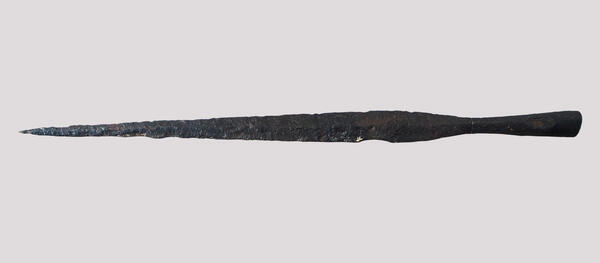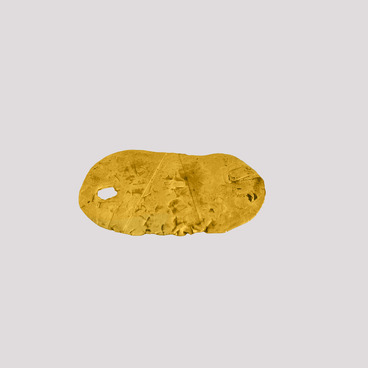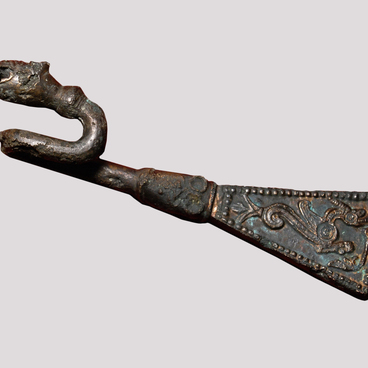Bear spear (‘rozhon’) is a Slavic heavy spear for cavalry, hand-to-hand combat or big game hunting. Bear spears were a universal pointing or bladed weapon and, due to their gravity, had great penetrating power. Steel spearheads were distinguished by their large size and, as a rule, laurel-leaf shape. Their length ranged from 20 to 60 cm, and their width sometimes reached 7 cm. The mass was about 700-1000 grams, while the weight of the tips of ordinary spears was 200-400 grams. Among the ancient Russian spears, there are no heavier, more powerful and wider tips than bear spears.
In 1958-1959, an expedition led by archaeologist Sedov discovered this spear during excavations of a settlement on the Volost River near the village of Borodino, Glinkovsky District, Smolensk Region. Archaeologist Sedov dated the Borodino settlement to the 12-14th centuries.
In the 12th century, a large settlement was formed on the Volost River. The settlement was located on a high promontory and was protected by a rampart and a moat. The site was example of the Vyatichi settlement, rare for the Smolensk region. To the south of the colony there was a large settlement, and to the west — mounds. This expensive weapon testified that a noble warrior-horseman lived here. The inhabitants of the settlement were engaged in agriculture, and there was a jewelry workshop onsite. In the first half of the 14th century, life of the settlement ceased, and since many valuable things were left, it can be assumed that the pestilence became the reason for the death of the settlement.
The doom of the Borodino settlement happened in one of the most tragic periods in the history of the Smolensk region — the late Middle Ages. It was an era of endless wars and raids. The Smolensk region became a constant object of encroachments by the Grand Duchy of Lithuania and the Golden Horde. The Horde domination had the most detrimental effect on the development of the Smolensk principality: by the middle of the 14th century, the number of settlements decreased by a third, the cultivated areas decreased, trade fell into decay, and many handicrafts were forgotten.
In 1958-1959, an expedition led by archaeologist Sedov discovered this spear during excavations of a settlement on the Volost River near the village of Borodino, Glinkovsky District, Smolensk Region. Archaeologist Sedov dated the Borodino settlement to the 12-14th centuries.
In the 12th century, a large settlement was formed on the Volost River. The settlement was located on a high promontory and was protected by a rampart and a moat. The site was example of the Vyatichi settlement, rare for the Smolensk region. To the south of the colony there was a large settlement, and to the west — mounds. This expensive weapon testified that a noble warrior-horseman lived here. The inhabitants of the settlement were engaged in agriculture, and there was a jewelry workshop onsite. In the first half of the 14th century, life of the settlement ceased, and since many valuable things were left, it can be assumed that the pestilence became the reason for the death of the settlement.
The doom of the Borodino settlement happened in one of the most tragic periods in the history of the Smolensk region — the late Middle Ages. It was an era of endless wars and raids. The Smolensk region became a constant object of encroachments by the Grand Duchy of Lithuania and the Golden Horde. The Horde domination had the most detrimental effect on the development of the Smolensk principality: by the middle of the 14th century, the number of settlements decreased by a third, the cultivated areas decreased, trade fell into decay, and many handicrafts were forgotten.



